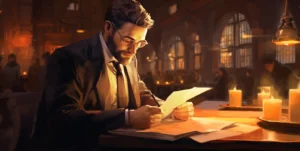How To Write a Compelling Book Blurb (+15 Examples)

A reader enters a bookstore. They walk towards your stunning book cover and flip it over. Their eyes skim over curated words…but the reader slides it back onto the shelf and moves on to the next book.
What happened?
Your worst nightmare, that’s what!
The book blurb failed to sell them on your book. They’re not convinced. It didn’t seem like their next great read. So they moved on…
How do you convince them? How do you sell the idea of your book enough for them to buy it?
Keep reading to learn how to create a book blurb that knocks your reader’s socks right off!
What is a Book Blurb?
A book blurb is a descriptive sales pitch that gives the reader a sneak peek of what the book is about. Without a compelling blurb, all the book marketing strategies in the world aren’t going to help very much.
It can be found on the back of your book cover, inside a hardcover book’s sleeve, or on the book’s description online, for example on the book’s Amazon page.
The book blurb may reveal to the reader:
- The genre
- The main characters
- The setting
- What’s unique about the book’s story
- Why they should care about the story
What a Book Blurb is Not?
A book blurb is important to your book’s success, so you shouldn’t get it mixed up with any other book description tools:
- Review Blurb: This is the endorsement that an authoritative figure, like an established author or celebrity, writes about your book. It can usually be found on the book cover.
- Description: This includes everything from your book blurb to reviews. This can be seen in your book listing online.
- Synopsis: This is the extended version of your book blurb and includes more details on the setting, characters, and plot. A book blurb sells your idea to the reader while a synopsis is most useful in selling the book idea to publishers.
Why is a Book Blurb Powerful?
There are millions of books for readers to choose from, so why should they choose yours?
A book blurb has the power to confuse the reader or turn their interest into a sale. A well-written blurb can captivate the reader, giving them no choice but to start reading the first chapter while browsing online, or standing in the middle of a bookstore.
That’s a lot of power for 200 words to hold. But dynamite comes in small packages.
A good book blurb can act as the dynamite that leads to an explosion in the book market.
How To Write a Captivating Book Blurb
Writing the perfect book blurb is a tall order, but you are the most equipped person to write one that blows readers away.
You know your book better than anyone else. All you need is a guideline to get you going. Follow the steps below and write an attention-grabbing book blurb:
Before You Write: Do Your Research
You wrote your entire book with the target reader in mind, so they should be just as important when writing your book blurb.
Dig up your research or conduct new research on why this reader-base would be interested in reading your book.
If it’s a fantasy novel, they could be looking to drift off into another world. If it’s a self-help book, they need a problem solved.
Consider why they’d love to read your book and feature that in your book blurb.
1. Lead with the Genre
The genre your book resides in needs to be obvious to the reader. Playing to the tone and atmosphere of your genre will leave no room for guessing.
You should aim to meet readers’ expectations of the genre. For example:
- A Thriller blurb will make the reader feel tense while being driven by adrenaline-soaked descriptions.
- A Rom-com blurb will cause a warm, fuzzy feeling that’s coupled with a quirky plot and characters.
Using keywords
There are certain keywords that are mainstays for genres, and you should sprinkle a few of those in to please the Amazon algorithm and make it easy to find when readers search for a book like yours. Being discoverable online will help your book sales soar. Use it to your advantage:
| Genre | Keyword |
|---|---|
| Romance | – Wholesome – Enemies to lovers romance – Steamy – Love triangle |
| Fantasy/Sci-Fi | – Vampire – Invasion – Cyberpunk – Sorcery – Post-apocalyptic |
| Thriller | – Murder – Crime – Serial Killer – Psychological |
| Non-Fiction | – Inspiring – History – True Crime – Biography |
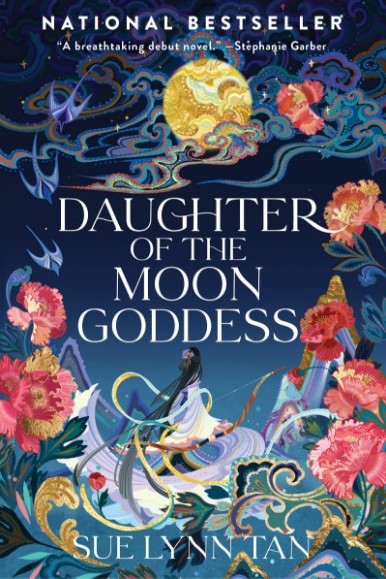
Book Blurb Example: Use Keywords
Sue Lynn Tan’s Daughter of the Moon Goddess lets the keywords fly in her book blurb:
A captivating and romantic debut epic fantasy inspired by the legend of the Chinese moon goddess, Chang’e, in which a young woman’s quest to free her mother pits her against the most powerful immortal in the realm.
Growing up on the moon, Xingyin is accustomed to solitude, unaware that she is being hidden from the feared Celestial Emperor who exiled her mother for stealing his elixir of immortality. But when Xingyin’s magic flares and her existence is discovered, she is forced to flee her home, leaving her mother behind.
Alone, powerless, and afraid, she makes her way to the Celestial Kingdom, a land of wonder and secrets. Disguising her identity, she seizes an opportunity to learn alongside the emperor’s son, mastering archery and magic, even as passion flames between her and the prince.
To save her mother, Xingyin embarks on a perilous quest, confronting legendary creatures and vicious enemies. But when treachery looms and forbidden magic threatens the kingdom, she must challenge the ruthless Celestial Emperor for her dream—striking a dangerous bargain in which she is torn between losing all she loves or plunging the realm into chaos.
Daughter of the Moon Goddess begins an enchanting duology which weaves ancient Chinese mythology into a sweeping adventure of immortals and magic, of loss and sacrifice—where love vies with honor, dreams are fraught with betrayal, and hope emerges triumphant.
Why it works
This blurb is not short of any fantasy tropes that fans love. If the reader is a fan of epic fantasy, their ears will be burning red after reading the first sentence.
The grandeur and complexities that are filled in this type of genre are conveyed. For example, the blurb mentions the keywords Emperor, Goddess, mythology, celestial, kingdom, magic, prince, quest, realm…we could go on!
It would be overkill if these words were not relevant to the story, but Sue’s novel is an epic fantasy staple.
2. Maintain the Author’s Voice
The atmosphere and tone of your book blurb should match your book almost identically. You don’t want the reader to read the blurb, flip open the book and feel as if they’ve been catfished.
You know your genre well but that doesn’t mean that writing a blurb in this genre is any easier. Browse online, or on your own bookshelf, to find successful blurbs in your genre to get a real feel for how you could do yours.

Book Blurb Example: Consistent Voice
The book blurb for Year of Yes by Shonda Rhimes is a great example of how to convey the author’s voice:
In this poignant, hilarious and deeply intimate call to arms, Hollywood’s most powerful woman, the mega-talented creator of Grey’s Anatomy and Scandal and executive producer of Bridgerton, For the People and How to Get Away with Murder, reveals how saying YES changed her life – and how it can change yours too.
With three hit shows on television and three children at home, Shonda Rhimes had lots of good reasons to say no when invitations arrived. Hollywood party? No. Speaking engagement? No. Media appearances? No. And to an introvert like Shonda, who describes herself as ‘hugging the walls’ at social events and experiencing panic attacks before press interviews, there was a particular benefit to saying no: nothing new to fear.
Then came Thanksgiving 2013, when Shonda’s sister Delorse muttered six little words at her: You never say yes to anything.
Profound, impassioned and laugh-out-loud funny, in Year of Yes Shonda Rhimes reveals how saying YES changed – and saved – her life. And inspires readers everywhere to change their own lives with one little word: Yes.
Why it works
Even though it’s written in 3rd person, the blurb takes a conversational tone. This familiar way of addressing the reader is distinct throughout the book, and it continues on the back of the book too.
Top Tip #1: Your writing voice should come through in the book blurb, but it should be written in the third person. Unless done with absolute class, creativity has its time and place and sometimes it’s best to follow the rules of the publishing industry.
3. Highlight the Hook
Take the most unique, compelling part of your book and use it to hook your audience.
The hook is the first 2 lines of your blurb that show why your book is interesting and worth reading.
These first lines are important as it’s the reader’s second impression of your book (after the book cover).
In an online platform, for example, Amazon, it’s even more vital to your book’s success. If the first lines don’t reel the reader in, they’re not clicking the ‘read more’ option to find out more about your book.
Then you’re at square one!
Your hook can be anything from the book’s premise, conflict, to the characters.
A good hook intrigues while not revealing too much about the story.
- Character: Give the reader a glimpse at the main character’s personality
- Premise: Highlight your unique take on a classic or perhaps the head-tilting concept that breathes new life into the book’s genre
- Conflict: A story is nothing without problems, show the reader how world-shattering your conflict is, either for the actual world or just your character’s world.
When picking how to lay out your hook, consider the following elements:
- What fear or goal is driving the main characters throughout the story?
- What external factors are creating conflict?
- How do the external factors influence your character’s choices?
- What is personally motivating your character’s choices?
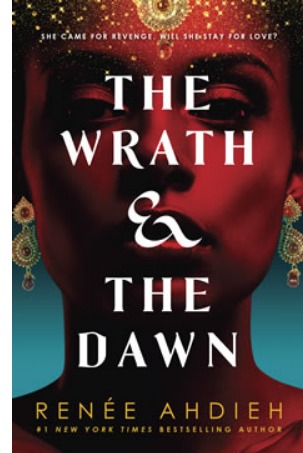
Book Blurb Example: Hook The Reader
Renée Ahdieh’s The Wrath and the Dawn has a blurb that is dripped in its hook:
One Life to One Dawn.
In a land ruled by a murderous boy-king, each dawn brings heartache to a new family. Khalid, the eighteen-year-old Caliph of Khorasan, is a monster. Each night he takes a new bride only to have a silk cord wrapped around her throat come morning. When sixteen-year-old Shahrzad’s dearest friend falls victim to Khalid, Shahrzad vows vengeance and volunteers to be his next bride. Shahrzad is determined not only to stay alive, but to end the caliph’s reign of terror once and for all.
Night after night, Shahrzad beguiles Khalid, weaving stories that enchant, ensuring her survival, though she knows each dawn could be her last. But something she never expected begins to happen: Khalid is nothing like what she’d imagined him to be. This monster is a boy with a tormented heart. Incredibly, Shahrzad finds herself falling in love. How is this possible? It’s an unforgivable betrayal. Still, Shahrzad has come to understand all is not as it seems in this palace of marble and stone. She resolves to uncover whatever secrets lurk and, despite her love, be ready to take Khalid’s life as retribution for the many lives he’s stolen. Can their love survive this world of stories and secrets?
Why it works
The character’s goal and personality make for a killer hook…but the complexity of the conflict captivates the reader even more.
The premise is revealed while leaving the reader on the edge of their seat wondering how this conflict will take place and where the story will go.
4. Follow a Structure
Your book blurb won’t get written in 5 minutes. It might not even get written in 5 hours.
It’s not as long as your book or even an essay, but that doesn’t mean you shouldn’t structure it. In fact, structuring it will give you a better chance of including what is necessary and cutting out the fluff.
The common plot structure can work for a blurb as well:
Introduction:
Introduce the main characters and the setting, giving the readers a chance to sympathize or relate to the characters.
For non-fiction, you want to make your reader the main character so speak directly to them. You can also turn the focus toward the expertise of the author here.
Conflict:
Show the internal and external conflicts that have happened or could happen. Problems create drama, and you want your readers to be excited to find out how it all unfolds.
In the case of non-fiction, point out the reader’s possible conflicts and how your book will address them.
Conclusion:
You have to finish off strong with a sense of urgency – they need to find out what happens!
For fiction books, you can entice the readers with a cliffhanger, and for non-fiction try to provide relief that their problems will be resolved because of your book.
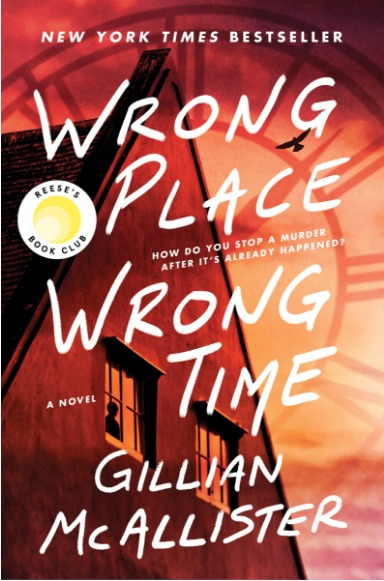
Book Blurb Example: Keep to a Structure
An example of moving a blurb through the above structure lies in Wrong Place Wrong Time by Gillian McAllister:
Can you stop a murder after it’s already happened?
It is midnight on the morning of Halloween, and Jen anxiously waits up for her 18-year-old son, Todd, to return home. But worries about his broken curfew transform into something much more dangerous when Todd finally emerges from the darkness. As Jen watches through the window, she sees her funny, seemingly happy teenage son stab a total stranger.
She doesn’t know who the victim is, or why Todd has committed such a devastating act of violence. All she knows is that her life, and Todd’s, have been shattered.
After her son is taken into custody, Jen falls asleep in despair. But when she wakes up… it is yesterday. The murder has not happened yet—and there may be a chance to stop it. Each morning, when Jen wakes, she is further back in the past, first weeks, then years, before the murder. And Jen realizes that somewhere in the past lies the trigger for Todd’s terrible crime…and it is her mission to find it, and prevent it from taking place.
Why it works
The blurb uses plot structure to sprinkle in key details that lure the reader in.
The introduction packs intensity into the narrative allowing the reader to feel the anxiety of the main character. The conflict then fits in perfectly with the atmosphere created, raising the stakes higher in the reader’s mind.
The conclusion lets the reader know exactly what the main character’s aim is while enticing the reader to see how it all unfolds.
Don’t stray too far from the structure
You may want to play around with the structure and show off your writing chops…but be warned! Readers are not going to spend 10 minutes trying to break down your masterpiece blurb. They just want to know if your book is worth reading.
The more out of the box it is, the more it will seem that your blurb is just out of pocket.
Read some examples of other book blurbs and use your understanding of them to successfully write your own. Here are some questions to ask as you analyze your fellow authors’ blurb structures:
- How does the blurb start?
- What is the common way to reveal the hook in that genre?
- How is the blurb concluded?
- What makes the blurb work?
- How could you improve the blurb?
Top Tip #2: It can seem impossible to try and fit your blurb into this mold right off the bat. We suggest taking a swing at the first draft by just describing your story like you would to a friend. Once you have all the information down, you’ll have a better idea of what’s missing and what should be left out.
5. Edit, edit, edit
If you’re struggling with your book blurb, you’re doing it right. It may be short, but that doesn’t reduce the time spent on it.
There should be tons of variations of your book blurb in your drafts. And you should keep every one of them as you never know which of your earlier drafts may contain that killer one-liner hook or that epic cliffhanger.
Writing a book blurb will turn into more editing than actually writing…just like writing an actual book!
You’ll have to revise, check the grammar, remove typos, write the last line better, or start off with a more surprising hook…there’s so much to edit!
But you should know when to stop editing. Ask yourself the below questions when revising your book blurb:
- Is your blurb easy to skim through with short sentences and paragraphs?
- Are your character and plot descriptions simple but also memorable?
- Does the tone match the book’s atmosphere?
- Is the hook clear?
- Do the conflicts and stakes grab attention without revealing too much?
- Are the expertise, credentials, and comparisons appropriate for your book?
- Does the blurb flow well?
Top Tip #3: If all the words on the page are starting to blur and drift away, read it out loud. Just like when you’re trying to get the dialogue in your book to sound perfect. It works for book blurbs too.
6. Get some Feedback
A great book blurb is not made in isolation. Share a few of your more promising drafts with friends, family, and your beta and alpha readers.
Ask them for their honest feedback and see which of your drafts get the best reactions. You can even combine what works from different versions to make the final version that hits all the marks.
But as is with most feedback, take care not to obsess over small details that one person may bring up. But if more than 2 people have similar negative feedback, you should address it.
Tips for Creating a Good Book Blurb
You know how it’s done…but how do you do it well?
Here are a few more tips for you to keep in mind to turn your blurb from good to great:
Whip out those copywriting skills
Writing a good book blurb is not exactly like any other of your writing pursuits. It’s more like copywriting. Copywriting is a marketing tool used to make readers take a desired action. For example, a call-to-action that entices a reader to sign up for your author newsletter.
You can use copywriting to persuade the reader to buy your book. The ‘copy’ in your book blurb should move the reader through the following emotions: Curiosity, intrigue, interest, and desire to know more.
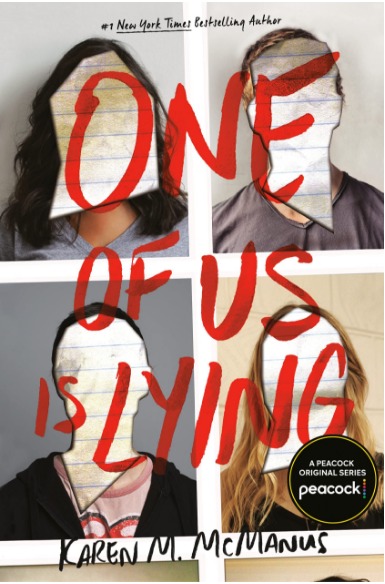
Book Blurb Example: Use Copywriting Tricks
A fun example would be from One of Us Is Lying by Karen M. McManus:
Pay close attention and you might solve this.
On Monday afternoon, five students at Bayview High walk into detention.
Bronwyn, the brain, is Yale-bound and never breaks a rule.
Addy, the beauty, is the picture-perfect homecoming princess.
Nate, the criminal, is already on probation for dealing.
Cooper, the athlete, is the all-star baseball pitcher.
And Simon, the outcast, is the creator of Bayview High’s notorious gossip app.
Only, Simon never makes it out of that classroom. Before the end of detention Simon’s dead. And according to investigators, his death wasn’t an accident. On Monday, he died. But on Tuesday, he’d planned to post juicy reveals about all four of his high-profile classmates, which makes all four of them suspects in his murder. Or are they the perfect patsies for a killer who’s still on the loose?
Everyone has secrets, right? What really matters is how far you would go to protect them.
Why it works
In copywriting, the writer needs to talk directly to the reader, and this blurb does this in a poignant way. Part of it is written how a normal blurb would be, but the beginning and end call out to the reader directly.
Readers who love this genre want to solve a mystery. And this blurb is asking the reader to do exactly that!
Word count matters
The shorter and more concise your book blurb, the better. Typically, a book blurb is between 100-200 words.
Depending on the information you’d like to share, the genre, and your publisher’s preferences, your book blurb can be anywhere from less than 50 words to 250.
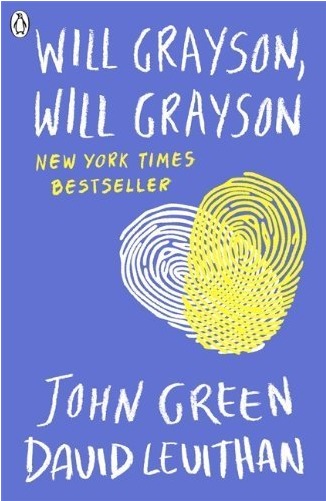
Book Blurb Example: Say It In Fewer Words
A short blurb can be found at the back of David Levithan and John Green’s Will Grayson, Will Grayson:
Will Grayson, Meet Will Grayson.
One cold night, in a most unlikely corner of Chicago, two teens—both named Will Grayson—are about to cross paths. As their worlds collide and intertwine, the Will Graysons find their lives going in new and unexpected directions, building toward romantic turns-of-heart and the epic production of history’s most fabulous high school musical.
Why it works
The book blurb quickly sets up the premise and then takes the reader on a short journey that invites them for a deeper look – buy the book! This blurb neither undersells nor overstays its welcome.
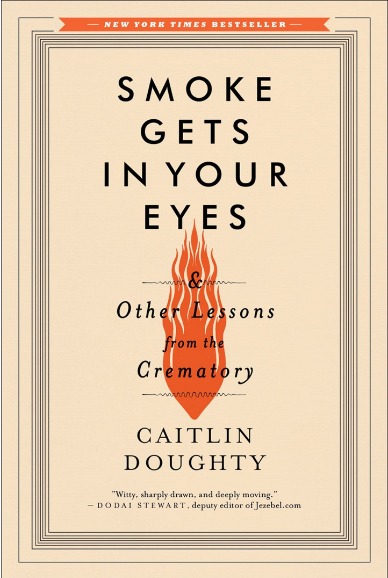
Book Blurb Example: More Description
There are some blurbs that bend the rule a bit like Caitlin Doughty’s Smoke Gets in Your Eyes & Other Lessons from the Crematory:
Most people want to avoid thinking about death, but Caitlin Doughty—a twenty-something with a degree in medieval history and a flair for the macabre—took a job at a crematory, turning morbid curiosity into her life’s work. Thrown into a profession of gallows humor and vivid characters (both living and very dead), Caitlin learned to navigate the secretive culture of those who care for the deceased.
Smoke Gets in Your Eyes tells an unusual coming-of-age story full of bizarre encounters and unforgettable scenes. Caring for dead bodies of every color, shape, and affliction, Caitlin soon becomes an intrepid explorer in the world of the dead. She describes how she swept ashes from the machines (and sometimes onto her clothes) and reveals the strange history of cremation and undertaking, marveling at bizarre and wonderful funeral practices from different cultures.
Her eye-opening, candid, and often hilarious story is like going on a journey with your bravest friend to the cemetery at midnight. She demystifies death, leading us behind the black curtain of her unique profession. And she answers questions you didn’t know you had: Can you catch a disease from a corpse? How many dead bodies can you fit in a Dodge van? What exactly does a flaming skull look like?
Honest and heartfelt, self-deprecating and ironic, Caitlin’s engaging style makes this otherwise taboo topic both approachable and engrossing. Now a licensed mortician with an alternative funeral practice, Caitlin argues that our fear of dying warps our culture and society, and she calls for better ways of dealing with death (and our dead).
Why it works
It doesn’t go over 260, but it’s a lot to read. It uses this word count to sell the reader on the hook. It discusses a taboo topic comprehensibly, warming the reader up enough to check out the first chapter.
This is a lesson in using the word count to capture the reader’s interest in a topic most would not want to touch.
Be present
Use present tense to captivate the reader. Keeping them smack dab in the middle of the action is easiest when it feels like the story is happening now.
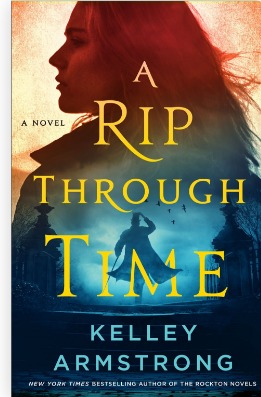
Book Blurb Example: Present Tense
A Rip Through Time by Kelley Armstrong does this well, despite the time travel element:
In this series debut, a modern-day homicide detective finds herself in Victorian Scotland―in an unfamiliar body―with a killer on the loose.
May 20, 2019: Homicide detective Mallory is in Edinburgh to be with her dying grandmother. While out on a jog one evening, Mallory hears a woman in distress. She’s drawn to an alley, where she is attacked and loses consciousness.
May 20, 1869: Housemaid Catriona Mitchell had been enjoying a half-day off, only to be discovered that night in a lane, where she’d been strangled and left for dead . . . exactly one-hundred-and-fifty years before Mallory was strangled in the same spot.
When Mallory wakes up in Catriona’s body in 1869, she must put aside her shock and adjust quickly to the reality: life as a housemaid to an undertaker in Victorian Scotland. She soon discovers that her boss, Dr. Gray, also moonlights as a medical examiner and has just taken on an intriguing case, the strangulation of a young man, similar to the attack on herself. Her only hope is that catching the murderer can lead her back to her modern life . . . before it’s too late.
Outlander meets The Alienist in Kelley Armstrong’s utterly compelling new series, mixing romance, mystery, and fantasy with thrilling results.
Why it works
This blurb introduces the complexities of a time travel mystery while keeping the reader completely locked into the reality of the situation.
The timeline, setting, and atmosphere of panic and mystery come through clearly. The plot is described in more detail due to the intricacy of the hook but it keeps the reader wondering, “What on Earth will happen next?”
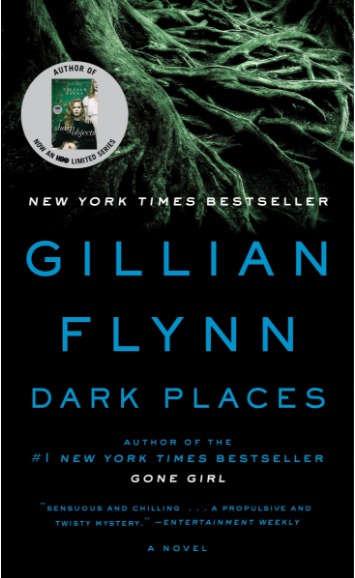
Book Blurb Example: Use The Past
But if you want to jump rope with the past and the present in your blurb, Gillian Flynn’s Dark Places shows you how:
Libby Day was just seven years old when her evidence put her fifteen-year-old brother behind bars.
Since then, she has been drifting. But when she is contacted by a group who are convinced of Ben’s innocence, Libby starts to ask questions she never dared to before. Was the voice she heard her brother’s? Ben was a misfit in their small town, but was he capable of murder? Are there secrets to uncover at the family farm or is Libby deluding herself because she wants her brother back?
She begins to realise that everyone in her family had something to hide that day… especially Ben. Now, twenty-four years later, the truth is going to be even harder to find.
Who did massacre the Day family?
Why it works
The book blurb talks about the mystery that plagues the main character’s life, but it happened years ago. This premise makes it appropriate to discuss the events before the book, while still keeping the actual tense as present.
Keep it Simple, Silly
Your book has the best chance of reaching readers when the blurb is straightforward. Confusing, long-winded sentences may appeal to a minority of readers, but you’ll lose a lot of book sales in the end.
The world is filled with many different types of readers. Don’t close your book off to them by writing a complicated book blurb that most won’t take the time to read.
However, in the case of non-fiction, if your book targets a niche audience it would be appropriate to use jargon and terminologies related to the subject matter.
But even in special cases, a reader looking to dip their toe into the waters of your topic could be put off by your embellished blurb.
You never know, a reader on the other side of the world could become your biggest fan. So, keep it simple.
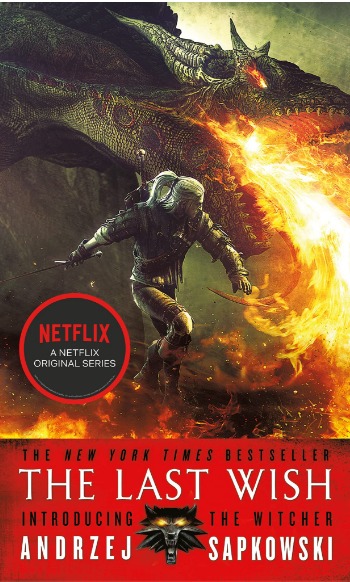
Book Blurb Example: Simplicity
The Witcher: The Last Wish by Andrzej Sapkowski has a blurb that masters this goal:
Geralt the Witcher—revered and hated—holds the line against the monsters plaguing humanity in this collection of adventures, the first chapter in Andrzej Sapkowski’s groundbreaking epic fantasy series that inspired the hit Netflix show and the blockbuster video games.
Geralt is a Witcher, a man whose magic powers, enhanced by long training and a mysterious elixir, have made him a brilliant fighter and a merciless hunter. Yet he is no ordinary killer. His sole purpose: to destroy the monsters that plague the world.
But not everything monstrous-looking is evil and not everything fair is good . . . and in every fairy tale there is a grain of truth.
Why it works
Sometimes a story’s existence is so well-known that going into more detail could do more damage than good.
The Witcher is known by many and the blurb reads as though it knows it. A quick brag and detailing of the premise and this book blurb is set.
Make the reader feel something
Your book’s hook is not factual, it’s emotional…even for some non-fiction books.
Obviously, if you’re writing a mathematics textbook, you’re not looking to emotionally sell your reader on your theories (or maybe you are – to each their own!).
Emotion pilots most decisions in life, so why would that be any different from buying a book? The more a reader feels for your story, the more likely they are to buy it.
This is why many blurbs are character-driven. It’s the fastest way for the reader to develop an emotional connection to your book.
Our advice? Don’t just tug at the heartstrings, try to rip them.
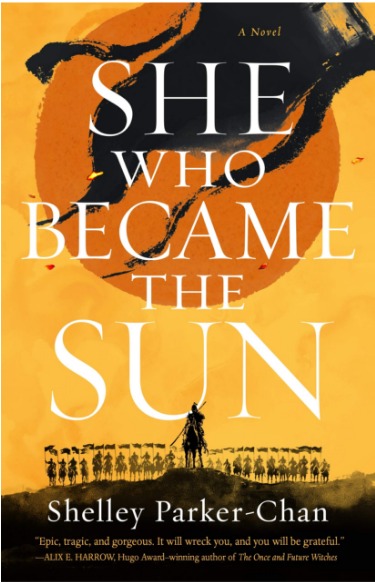
Book Blurb Example: Use Emotion
She Who Became the Sun by Shelley Parker-Chan does this well:
She Who Became the Sun reimagines the rise to power of the Ming Dynasty’s founding emperor.
To possess the Mandate of Heaven, the female monk Zhu will do anything.
“I refuse to be nothing…”
In a famine-stricken village on a dusty yellow plain, two children are given two fates. A boy, greatness. A girl, nothingness…
In 1345, China lies under harsh Mongol rule. For the starving peasants of the Central Plains, greatness is something found only in stories. When the Zhu family’s eighth-born son, Zhu Chongba, is given a fate of greatness, everyone is mystified as to how it will come to pass. The fate of nothingness received by the family’s clever and capable second daughter, on the other hand, is only as expected.
When a bandit attack orphans the two children, though, it is Zhu Chongba who succumbs to despair and dies. Desperate to escape her own fated death, the girl uses her brother’s identity to enter a monastery as a young male novice. There, propelled by her burning desire to survive, Zhu learns she is capable of doing whatever it takes, no matter how callous, to stay hidden from her fate.
After her sanctuary is destroyed for supporting the rebellion against Mongol rule, Zhu uses the chance to claim another future altogether: her brother’s abandoned greatness.
Why it works
Each description in this blurb aims to leave a pang behind in its wake. It stirs up the emotions felt by the main character enough for the readers themselves to feel it too.
It works because the stakes are emphasized in each paragraph, making the heaviness of the premise clear to the reader.
Cash in the endorsements
Don’t hesitate to show off a glowing review above or below your book blurb.
A one-liner endorsement by a recognized figure like a famous author or publication will give the back cover of your book the edge it needs to sell readers on why your book belongs in their personal library.
The one-liner review should be something substantial that perhaps you haven’t said in the blurb itself, or further emphasizes what you wrote in the blurb.
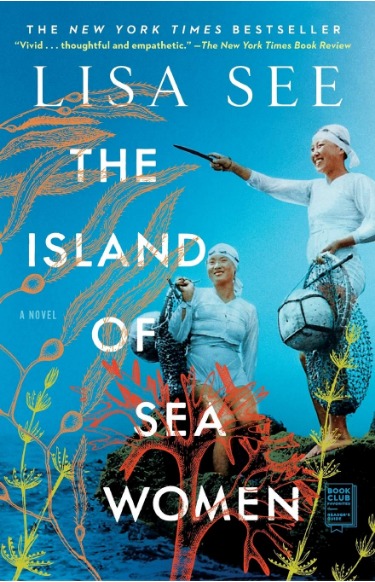
Book Blurb Example: Show Off Endorsements
Sometimes you can put a few reviews together, as Lisa See has done for The Island of Sea Women:
THE NEW YORK TIMES BESTSELLER
“A mesmerizing new historical novel” (O, The Oprah Magazine) from Lisa See, the bestselling author of The Tea Girl of Hummingbird Lane, about female friendship and devastating family secrets on a small Korean island.
Mi-ja and Young-sook, two girls living on the Korean island of Jeju, are best friends who come from very different backgrounds. When they are old enough, they begin working in the sea with their village’s all-female diving collective, led by Young-sook’s mother. As the girls take up their positions as baby divers, they know they are beginning a life of excitement and responsibility—but also danger.
Despite their love for each other, Mi-ja and Young-sook find it impossible to ignore their differences. The Island of Sea Women takes place over many decades, beginning during a period of Japanese colonialism in the 1930s and 1940s, followed by World War II, the Korean War, through the era of cell phones and wet suits for the women divers. Throughout this time, the residents of Jeju find themselves caught between warring empires. Mi-ja is the daughter of a Japanese collaborator. Young-sook was born into a long line of haenyeo and will inherit her mother’s position leading the divers in their village. Little do the two friends know that forces outside their control will push their friendship to the breaking point.
“This vivid…thoughtful and empathetic” novel (The New York Times Book Review) illuminates a world turned upside down, one where the women are in charge and the men take care of the children. “A wonderful ode to a truly singular group of women” (Publishers Weekly), The Island of Sea Women is a “beautiful story…about the endurance of friendship when it’s pushed to its limits, and you…will love it” (Cosmopolitan).
Why it works
This blurb uses professional book reviews to highlight the hook while giving a few more details the blurb hasn’t shared.
The reviews are uniquely strummed together to make a cohesive paragraph that aptly caps off the book blurb, tempting the reader to, excuse the pun, dive in.
Set the Scene
Sometimes the best way to describe your story is to let the story speak for itself.
Take a scene from the beginning of the book and shape it into a book blurb.
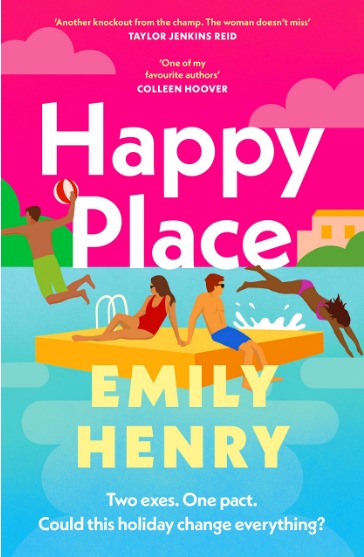
Book Blurb Example: Scene From The Book
Emily Henry’s Happy Place gets us right into the thick of it:
Go to your happy place, I think desperately, only to realize I’m literally in my happy place.
And he. Is. Here.
The very last person I expected to see.
The very last person I want to see.
Wyn Connor.
My fiancé.
Why it works
It sinks the reader into the pit in Harriet’s stomach in this short excerpt. It smartly drops the book title while hinting at the story’s conflict – which is also the hook.
The blurb neglects one of the main character’s names (Harriet) but rather drops us straight into her mind instead. Then it confirms who the other main character is.
Compare your book
Your book may be different and interesting…but you should try to have a comparison lined up. Readers will have their eyes popping out of their heads when they read the title of the book that they loved being compared to yours.
In some cases, it will almost guarantee a sale.
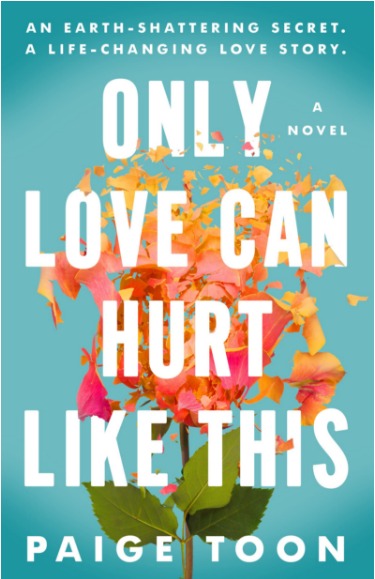
Book Blurb Example: Making a Comparison
Only Love Can Hurt Like This by Paige Toon uses comparisons to her benefit:
In the spirit of Colleen Hoover and Jojo Moyes’s Me Before You, an unforgettable and heartbreaking love story with an earth-shattering secret at its core that asks the question: is love worth risking everything for?
An earth-shattering secret. A life-changing love story.
When Wren realizes her fiancé is in love with someone else, she thinks her heart will never recover.
On the other side of the world, Anders lost his wife four years ago and is still struggling to move on.
Wren hopes that spending the summer with her dad and step-family on their farm in Indiana will help her to heal. There, amid the cornfields and fireflies, she and Anders cross paths and their worlds are turned upside-down again.
But Wren doesn’t know that Anders is harboring a secret, and if he acts on any feelings he has for Wren it will have serious fall-out for everyone. Walking away would hurt Wren more than she can imagine. But, knowing the truth, how can she possibly stay?
Why it works
This book blurb doesn’t just use a well-known book in Me Before You but also uses the trending author, Colleen Hoover.
Both comparisons are excellent choices to get fans convinced. Because sometimes the best way to persuade is to say, “If you liked these books, you’ll LOVE this.”
About the author
Your book or book blurb does not exist without you. Depending on the genre and the type of author you are, a quick biography could go a long way to sell your work.
For a fiction book blurb, you may want to boast about your successful works, and for non-fiction, you can go into a bit of detail on your qualifications and expertise.
Readers love connecting with the authors in some way, whether it’s to solidify their trust through your credentials or to relate to you on a more personal level.
Your biography should inform the reader why your story is special and why they should be interested because it’s YOU who wrote it.
Top Tip #4: Remember to leave space for your book blurb to breathe and not clutter up the back cover of your book. Try adding your bio to the sleeve of your book if it exceeds one line.
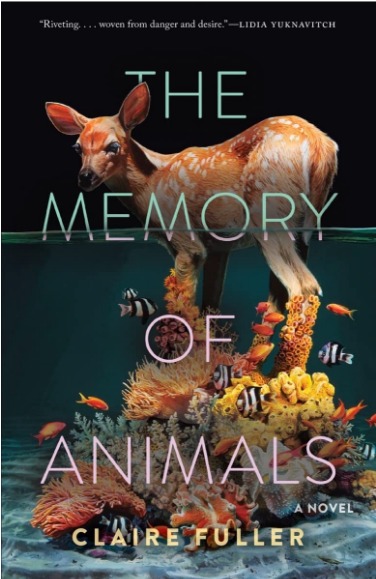
Book Blurb Example: Mini Bio
The Memory of Animals by Claire Fuller does this mini biography really well:
From the award-winning author of Our Endless Numbered Days, Swimming Lessons, Bitter Orange, and Unsettled Ground comes a beautiful and searing novel of memory, love, survival―and octopuses.
In the face of a pandemic, an unprepared world scrambles to escape the mysterious disease’s devastating symptoms: sensory damage, memory loss, death. Neffy, a disgraced and desperately indebted twenty-seven-year-old marine biologist, registers for an experimental vaccine trial in London―perhaps humanity’s last hope for a cure. Though isolated from the chaos outside, she and the other volunteers―Rachel, Leon, Yahiko, and Piper―cannot hide from the mistakes that led them there.
As London descends into chaos outside the hospital windows, Neffy befriends Leon, who before the pandemic had been working on a controversial technology that allows users to revisit their memories. She withdraws into projections of her past―a childhood bisected by divorce; a recent love affair; her obsessive research with octopuses and the one mistake that ended her career. The lines between past, present, and future begin to blur, and Neffy is left with defining questions: Who can she trust? Why can’t she forgive herself? How should she live, if she survives?
The Memory of Animals is an ambitious, deeply imagined work of survival and suspense, grief and hope, consequences and connectedness, that asks what truly defines us―and the lengths we will go to rescue ourselves and those we love.
Why it works
The book blurb delves into the plot and leaves it all on the table for readers to engage with. But the first line, even though it’s short, says a mouthful about the author’s accomplishments and previous works.
And let’s be honest, who doesn’t get persuaded by the words award-winning?
What makes a Bad Book Blurb?
Your book blurb has the superpower to make or break your book’s success. And being able to write a good one includes knowing what not to do.
Avoid the below at all costs:
- Wordy sentences and paragraphs that can’t be skim-read
- A book endorsement quote that’s too long or too general
- Unclear description of the plot, conflict, or genre
- Typos and grammar issues
- Use of cliché or unoriginal lines that will make your book sound dated
- A summary of the book’s plot
- Revealing a spoiler
- Irrelevant details that don’t add to the description and tone of your book blurb
- Long character backstories
- Too much worldbuilding
- Information overload
- Too much information about the author
Your Book Blurb ‘Template’
There’s sadly no exact formula that works for every book blurb. But no matter how you go about writing it, there are 3 things it should always have:
- Problem: What is the current situation and conflict for the main characters
- Possible resolution: How could the characters possibly overcome the problem or what could happen if they don’t resolve it
- Emotion: Evoke the feelings the reader will have while reading it by looping in some genre-specific keywords
Similarly, this can be applied to non-fiction book blurbs too:
- Problem: What problems are the readers facing
- Possible resolution: How does your book solve these problems
- Emotion: Make the reader believe that this book will bring relief and positive change in their life.
Should You Ask For Help?
In most cases, the author and marketing team write the book blurb together. But you can hire someone to write the book blurb for you.
Pick someone who is able to carry through your voice and the book’s tone seamlessly, or your blurb and the book will feel worlds apart.
But…we suggest you write it yourself. No one knows the story better than you. No one loves it more than you.
We know that no author likes writing a book blurb. But your book deserves every shot at success.
If you must, ask a professional for help in refining your blurb so it gets the advantage of you writing it and a professional editing it.
It Doesn’t Stop At The Blurb
Now, that you’ve taken the time to learn more about the long, albeit kind of annoying, process of writing a book blurb you may think you’re definitely going to get that sale from this blog’s intro.
We’re here to tell you that…we don’t know if you did. The thing is, a book blurb is your foot in the door. Sometimes to finally see those dollar signs, your efforts have to be continuous.
One marketing tool that could take some of that weight off is an author website. It’s a professional online presence that readers from all over the world can find. And it represents you in your glory.
We love helping authors on their journey to a successful career and we’ve built too many custom author websites to count.
Fill in this inquiry form if you’re ready to house your irresistible book blurb on your author website.
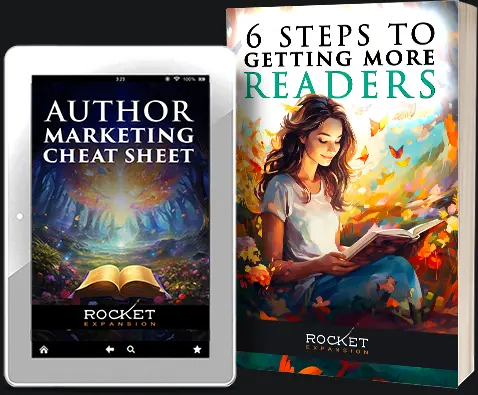
Want help with your author marketing? Get our FREE ebook and cheat sheet: 6 Steps To Getting More Readers.
By subscribing, you agree to get emails from me, Matt Ziranek. I’ll respect your privacy and you can unsubscribe any time.






